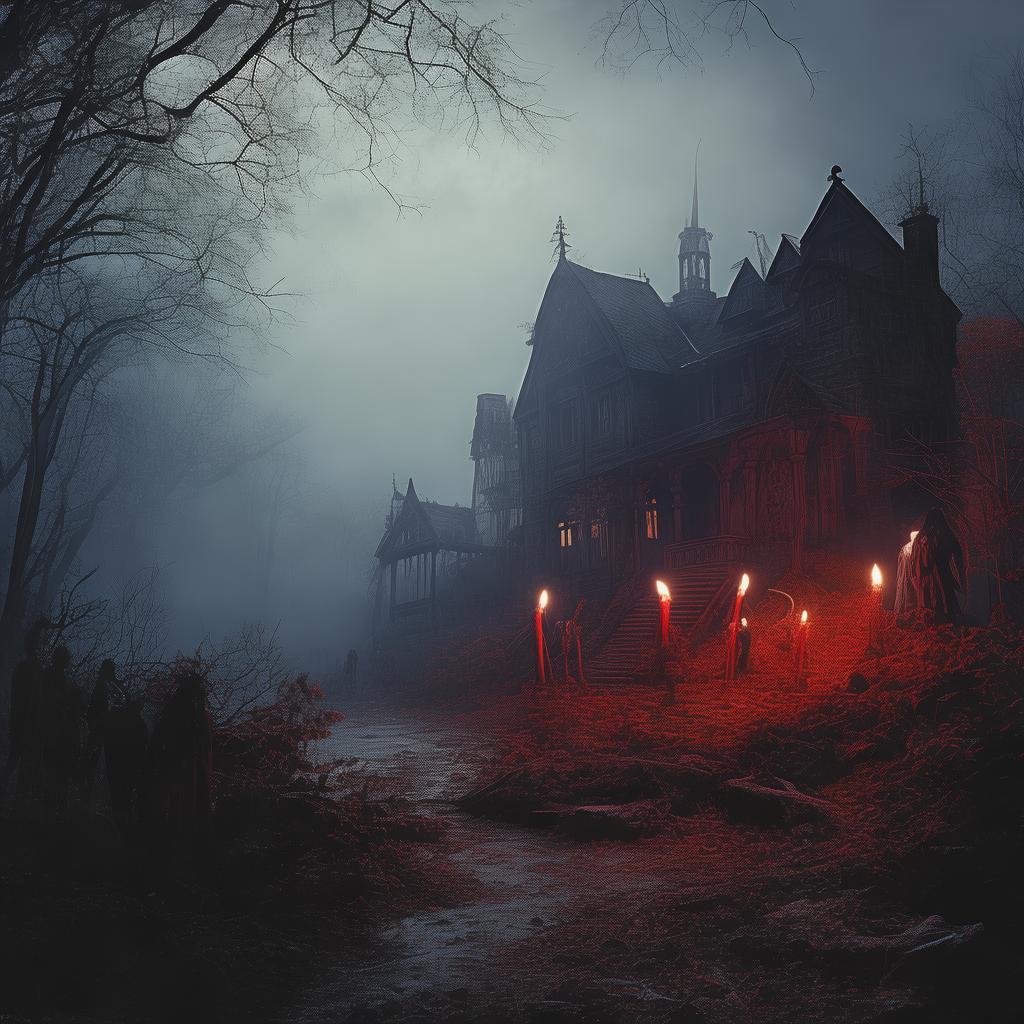The Haunting of the Abandoned NanChong Temple
In the heart of the ancient city of NanChong, nestled between rolling hills and a serene river, stood an abandoned temple, its once-golden roofs now cloaked in moss and ivy. The temple had been a place of reverence and peace for centuries, until the fateful day it was abandoned by its last priest. The villagers spoke in hushed tones about the temple, claiming that it was haunted by the spirits of those who had perished within its walls.
One cold winter night, a young researcher named Ling arrived in NanChong, driven by her fascination with the temple's ghostly reputation. She had spent years studying local folklore, determined to uncover the truth behind the hauntings. Ling was a slender woman with a determined gaze, her hair pulled back into a severe bun that contrasted sharply with her curious nature.
Her journey began with a visit to the local library, where she poured over dusty tomes and old diaries, piecing together the temple's history. She learned that the temple had been a place of great importance, a sanctuary for the people of NanChong during times of hardship and celebration. However, over the years, the temple had fallen into disrepair, and its last priest, a man named Master Hua, had mysteriously vanished without a trace.
Determined to uncover the truth, Ling ventured into the temple at twilight, the first human to set foot inside in years. The air was thick with the scent of damp earth and decay. As she stepped through the creaking gates, she felt a chill that seemed to seep into her bones. She moved cautiously, her flashlight cutting through the darkness, illuminating the eerie silence that surrounded her.
Ling's path led her to the temple's main hall, where a large, ornate altar stood. She noticed a faint, glowing light emanating from behind the altar. With a mixture of excitement and trepidation, she approached the source of the light, her heart pounding in her chest. As she moved closer, she realized that the light was coming from a small, ornate box, its surface etched with ancient symbols.
With trembling hands, Ling opened the box and discovered a collection of letters, each one addressed to Master Hua. The letters were written by a woman named Mei, who had been Master Hua's lover. Mei had poured her heart and soul into the letters, expressing her love, despair, and a sense of impending doom. As Ling read through the letters, she began to understand the tragic tale that unfolded.
Mei had become pregnant with Master Hua's child, but her pregnancy was shrouded in secrecy. The villagers were staunchly against interfaith marriage, and Mei feared that her child would be shunned and unwanted. As the months passed, Mei grew more and more despondent, and she wrote to Master Hua, asking him to come to her and take the child away to safety.
One night, as Mei lay in bed, expecting Master Hua to come for her, a group of villagers broke into the temple, determined to destroy the pregnancy and punish Master Hua for his transgression. In a fit of rage, the villagers had attacked Master Hua, who fought back valiantly. During the struggle, Master Hua had accidentally pushed Mei to the floor, knocking her unconscious. In the chaos, Mei had wandered away from the temple, only to be found days later, lifeless, in the river that bordered the temple grounds.
Ling's heart ached as she read the final letter from Mei, in which she confessed her love and her desire for a peaceful end. As she finished the letter, the temple seemed to come alive around her. She felt a presence, a ghostly figure moving through the room. She turned to see a woman, dressed in ancient attire, standing before her, her eyes filled with sorrow.
Mei, it appeared, had been waiting for Ling, hoping that someone would finally hear her story. "I am grateful," Mei said in a voice that seemed to come from everywhere at once. "You have given me peace."
Ling was frozen in place, her mind racing. She had stumbled upon the truth, but at what cost? Mei's presence was a haunting reminder of the past, and the weight of it bore down on her.
As the figure of Mei faded away, Ling realized that she had to face the villagers and reveal the truth. She had to bring closure to Mei's tragic fate and to the ghostly memories that haunted the temple. With a heavy heart, she left the temple, her resolve set to confront the past and bring it to light.

Back in the village, Ling faced an uphill battle. The villagers were skeptical, and many were in denial. But as she presented the evidence she had found, they began to understand the gravity of what had transpired. The truth had come out, and with it, the peace that Mei had longed for.
The temple was no longer a place of fear, but a reminder of the past and the sacrifices that had been made. Ling's research had not only uncovered a haunting tale but also brought healing to a community that had long been haunted by its own history.
And so, the NanChong Temple, once a place of reverence and peace, became a symbol of forgiveness and redemption, a testament to the power of truth and the eternal quest for understanding.
✨ Original Statement ✨
All articles published on this website (including but not limited to text, images, videos, and other content) are original or authorized for reposting and are protected by relevant laws. Without the explicit written permission of this website, no individual or organization may copy, modify, repost, or use the content for commercial purposes.
If you need to quote or cooperate, please contact this site for authorization. We reserve the right to pursue legal responsibility for any unauthorized use.
Hereby declared.









